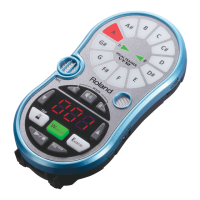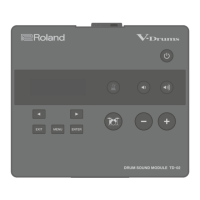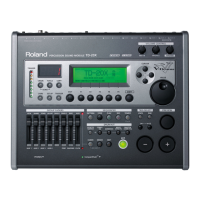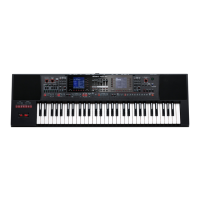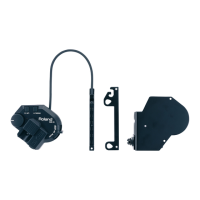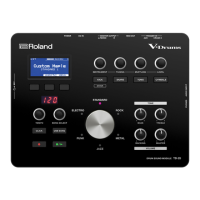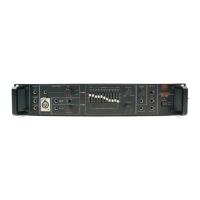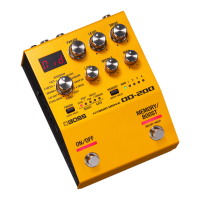9—Working with Input Signals
Roland VS-2480 Owner’s Manual www.rolandus.com 133
Who Should Supply the Master Clock?
There are two basic conditions in which you’ll be bringing digital audio signals into the
VS-2480’s digital inputs, and each has its own master clock considerations:
• when its hard disk recorder
isn’t
being synchronized to an external device
• when its hard disk recorder
is
being synchronized to an external device
When the VS-2480’s hard disk recorder isn’t being synchronized to an external device,
and is receiving digital audio from:
•
a single external device
—use the external device as the source of the master clock.
•
multiple external devices
—use a separate word clock generator and slave all of your
devices, including the VS-2480, to the generator’s master clock. Set the VS-2480’s
MASTER CLOCK parameter to WORD CLOCK.
When the VS-2480’s transport is being synchronized to an external device, and is
receiving digital audio from:
•
the same device to which the VS-2480 is being synchronized
—you have a few options,
listed here in order of preference:
•
If you have a separate word clock generator
—slave the sync/signal source device
and the VS-2480 to the generator’s word clock. Set the VS-2480’s MASTER
CLOCK parameter to WORD CLOCK.
•
If you don’t have a separate word clock generator
—use the device to which the
VS-2480 is being synchronized and from which the digital audio is coming as
the master clock source. Set MASTER CLOCK to EXT TIME CODE.
•
multiple external devices
—use a separate word clock generator and slave all of your
devices, including the VS-2480, to the generator’s master clock. Set the VS-2480’s
MASTER CLOCK parameter to WORD CLOCK.
Designating the Master Clock for Digital Audio Input
When you’re receiving digital input signals from a connected R-BUS device, either
device can serve as the master—be sure to set up the other as a slave.
However, in order for the VS-2480 to successfully receive digital audio from other
external digital audio devices, the VS-2480 should usually be slaved to an external
master clock. Here’s how to set up a successful master/slave digital audio relationship:
1. Press UTILITY.
2. Press PAGE until “Proj” appears above F3.
3. Press F3 (Proj) to view the DIGITAL I/0 parameters.
4. Press
, if necessary, to select the MASTER CLOCK parameter.
Each Roland R-BUS device has its own unique capabilities and setup parameters. The
“Supplemental Information” chapter at the end of this manual explains how to set up
each R-BUS device for use with the VS-2480—these instructions include details on
configuring the devices for the successful transfer of digital audio into the VS-2480.
VS2480OMUS.book 133 ページ 2006年2月7日 火曜日 午後4時16分
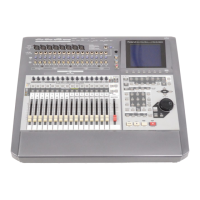
